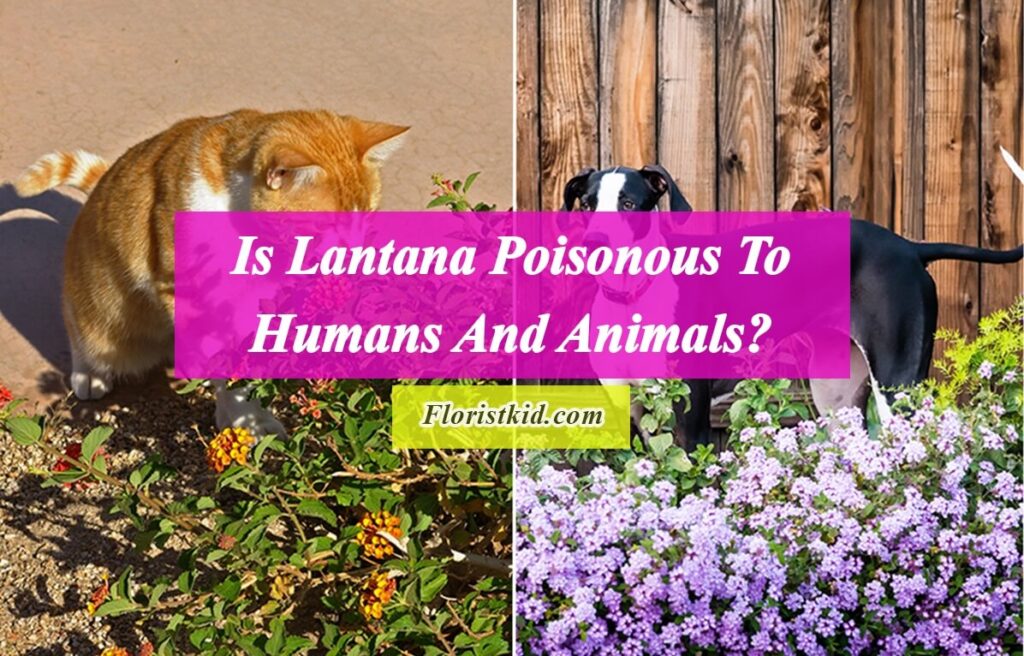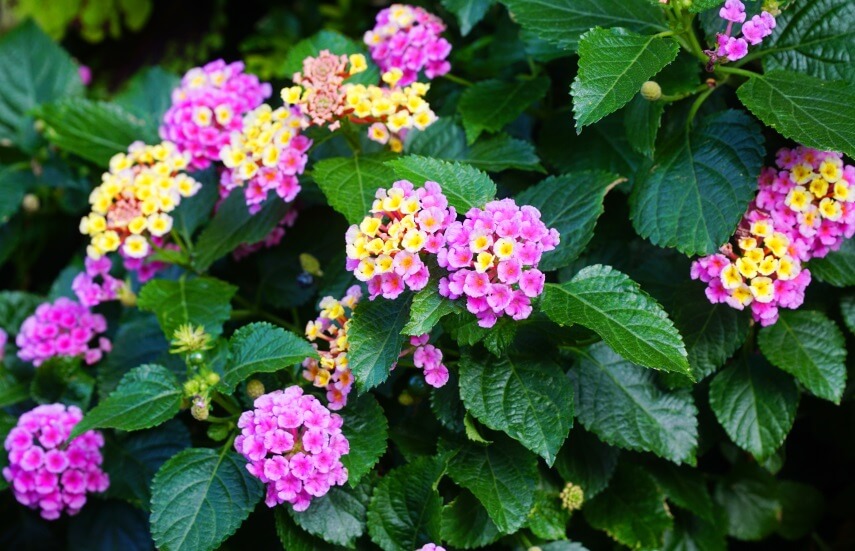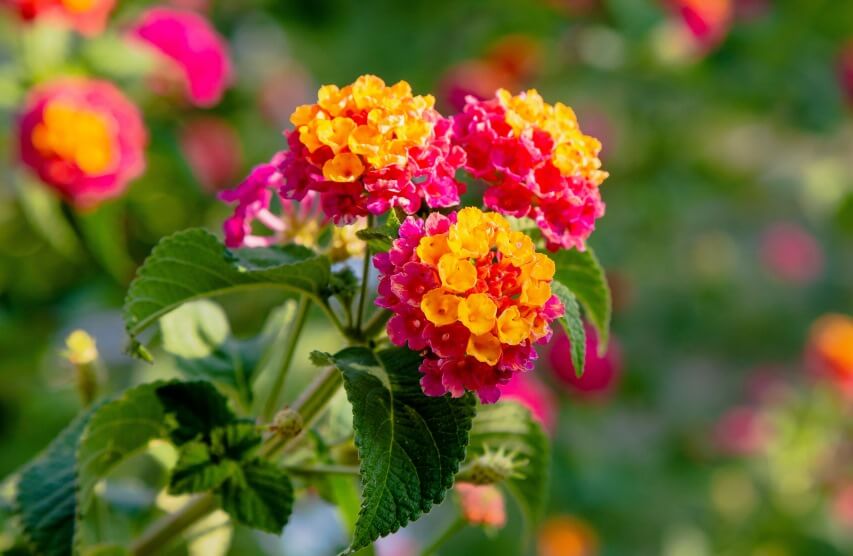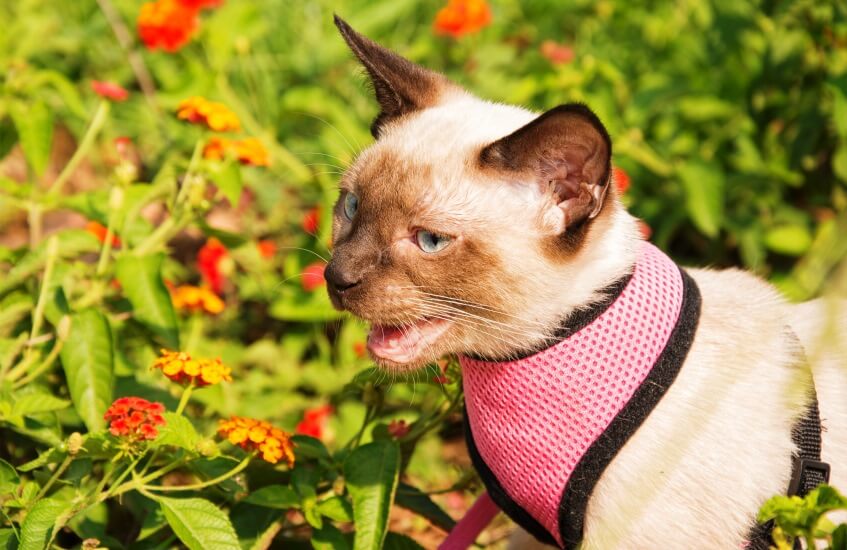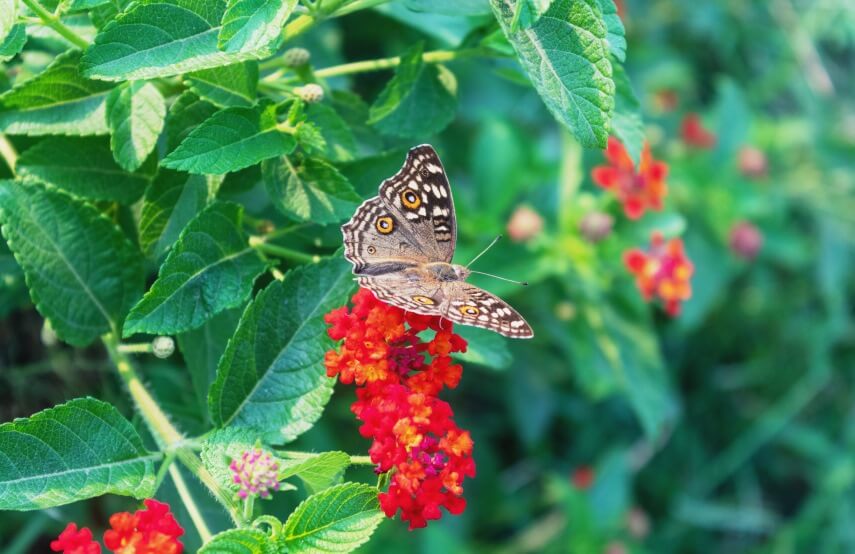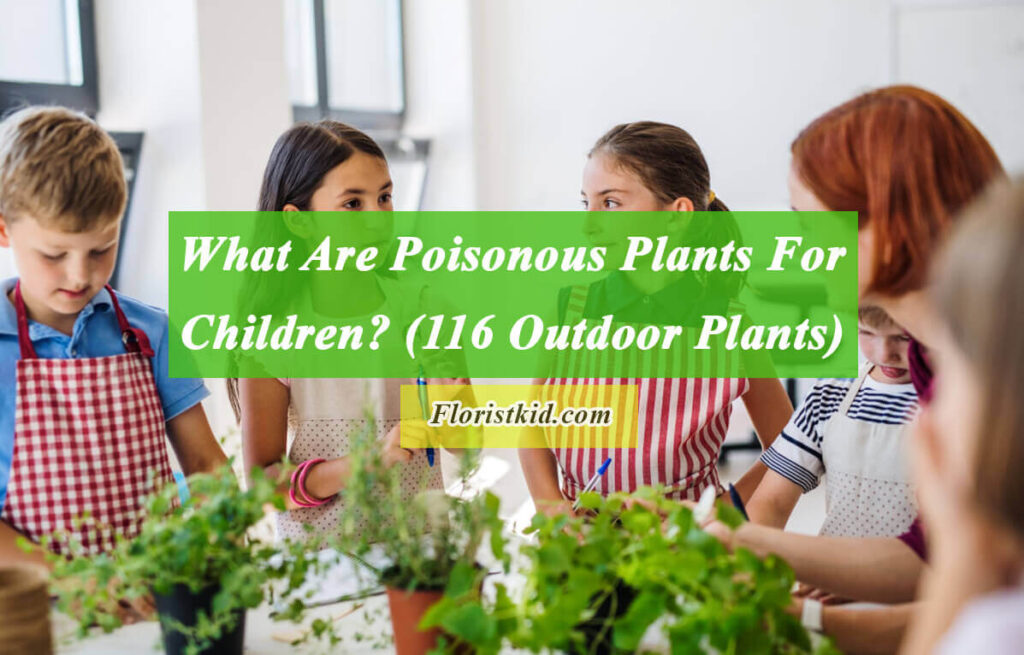Lantana (Lantana camara), is a vibrant and popular flowering plant known for its colorful blooms and ability to thrive in various climates. This lovely plant has garnered attention for its potential toxicity to humans and animals. While admired for its ornamental beauty, lantana contains toxic compounds that pose risks if ingested or handled improperly. This article explores the potential of lantana and offers insights into mitigating risks for human and animal health.
If you are interested in this topic, you can also read
<<Is Lavender Poisonous? >> and <<Is Lily Of Valley Poisonous? >> articles.
Toxic Components Of Lantana
Lantana contains several toxic components, primarily concentrated in its foliage and unripe berries. The plant’s toxicity is attributed to a group of compounds known as triterpenoids, particularly pentacyclic triterpenoids, which include lantadene A and lantadene B. These compounds are highly concentrated in the green parts of the plant, including the leaves and stems, but are also present in smaller amounts in the ripe berries. Additionally, lantana contains alkaloids such as lantadene alkaloids, which contribute to its toxic effects [1, 2].
It is essential to note that the toxicity of lantana can vary depending on factors such as the species of lantana, the maturity of the plant parts consumed, and the quantity ingested. Overall, understanding the toxic components of lantana is crucial for raising awareness about its potential dangers and implementing measures to mitigate the risk of poisoning in both humans and animals.
Is Lantana Poisonous To Humans?
Yes, lantana is toxic to humans if ingested. Lantana toxins in berries or leaves when ingested, can cause a range of symptoms, including gastrointestinal distress such as nausea, vomiting, diarrhea, abdominal pain, liver and kidney damage, and respiratory issues. In rare instances, ingestion of large quantities of lantana may be fatal. Additionally, handling lantana plants can sometimes cause skin irritation or allergic reactions in some individuals, particularly those with sensitive skin [3, 4].
It is important for humans to avoid ingesting lantana berries or leaves and to exercise caution when handling the plant to prevent potential adverse effects. If ingestion occurs or symptoms develop after contact with lantana, medical attention should be sought promptly.
Preventive Measures
To mitigate the risks associated with lantana toxicity, several preventive measures can be implemented [5, 6]:
Education
Raise awareness about the potential dangers of lantana among communities, especially those with children.
Plant Selection
Consider alternatives to lantana in landscaping and gardening, choosing non-toxic plants that pose minimal risks to human and animal health.
Proper Handling
Wear gloves when handling lantana plants, and avoid touching your face or mouth to prevent accidental ingestion of toxic compounds.
Is Lantana Poisonous To Cats?
Yes, lantana is extremely toxic to cats. Toxic compounds in lantana plants can cause adverse effects if ingested by cats. When cats ingest lantana, they may experience symptoms such as vomiting, diarrhea, abdominal pain, lethargy, and loss of appetite. In severe cases of poisoning, lantana ingestion can lead to liver damage and even death.
Cat owners must be aware of the potential dangers posed by lantana plants and take precautions to prevent their cats from coming into contact with them. This may include keeping lantana plants out of reach of cats or avoiding planting them altogether in areas where cats roam.
If a cat is suspected of ingesting lantana or showing poisoning symptoms, immediate veterinary attention should be sought. Treatment may include supportive care to manage symptoms and, in severe cases, interventions to address liver damage caused by the ingestion of toxic compounds [7, 8, 9, 10].
Is Lantana Poisonous To Dogs?
Yes, lantana is extremely toxic to dogs. Toxic compounds in lantana plants can cause adverse effects if ingested by dogs. When dogs ingest lantana, they may experience symptoms such as vomiting, diarrhea, abdominal pain, lethargy, weakness, difficulty breathing, and changes in heart rate. In severe cases of poisoning, lantana ingestion can lead to liver damage, kidney failure, and even death.
Dog owners must be aware of the potential dangers posed by lantana plants and take precautions to prevent their dogs from coming into contact with them. This may include keeping lantana plants out of reach of dogs or avoiding planting them altogether in areas where dogs roam. If a dog is suspected of ingesting lantana or showing poisoning symptoms, immediate veterinary attention should be sought. Treatment may include supportive care to manage symptoms, such as intravenous fluids to prevent dehydration, and interventions to address organ damage caused by the ingestion of toxic compounds [11, 12].
Is Lantana Poisonous To Livestock?
Yes, lantana is extremely toxic to livestock. Lantana toxicity is a significant concern for livestock, particularly cattle, sheep, and horses, which may graze on lantana plants if other forage options are limited. Consumption of lantana leaves can lead to a condition known as lantana poisoning or lantana toxicosis in animals. Symptoms may include drooling, loss of appetite, jaundice, photosensitivity, and in severe cases, death. Livestock owners should be vigilant about controlling lantana growth in grazing areas and providing alternative forage options to minimize the risk of poisoning [13].
Conclusion
While lantana adds aesthetic appeal to gardens and landscapes, its toxicity poses risks to humans and animals if not handled with care. By understanding the potential dangers associated with lantana and implementing preventive measures, individuals can enjoy the beauty of this plant while safeguarding the well-being of themselves and their animals. Vigilance, education, and responsible management are key to minimizing the risks of lantana toxicity and promoting safer environments for all.

